A positive role of cadherin in Wnt/β-catenin signalling during epithelial-mesenchymal transition
- PMID: 21909376
- PMCID: PMC3166074
- DOI: 10.1371/journal.pone.0023899
A positive role of cadherin in Wnt/β-catenin signalling during epithelial-mesenchymal transition
Abstract
The Wnt/β-catenin signalling pathway shares a key component, β-catenin, with the cadherin-based adhesion system. The signalling function of β-catenin is conferred by a soluble cytoplasmic pool that is unstable in the absence of a Wnt signal, whilst the adhesion function is based on a cadherin-bound, stable pool at the membrane. The cadherin complex is dynamic, allowing for cell-cell rearrangements such as epithelial-mesenchymal transition (EMT), where the complex turns over through internalisation. Potential interplay between the two pools remains poorly understood, but cadherins are generally considered negative regulators of Wnt signalling because they sequester cytoplasmic β-catenin. Here we explore how cellular changes at EMT affect the signalling capacity of β-catenin using two models of EMT: hepatocyte growth factor (HGF) treatment of MDCK cells, and gastrulation in embryonic development. We show that EMT not only provides a pool of signalling-competent β-catenin following internalisation of cadherin, but also significantly facilitates activation of the Wnt pathway in response to both Wnt signals and exogenous β-catenin. We further demonstrate that availability of β-catenin in the cytoplasm does not necessarily correlate with Wnt/β-catenin pathway activity, since blocking endocytosis or depleting endogenous cadherin abolishes pathway activation despite the presence of β-catenin in the cytoplasm. Lastly we present data suggesting that cadherins are required for augmented activation of the Wnt/β-catenin pathway in vivo. This suggests that cadherins play a crucial role in β-catenin-dependent transcription.
Conflict of interest statement
Figures
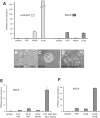
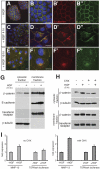
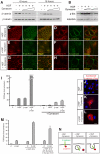
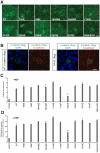
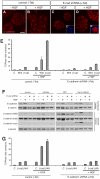

Similar articles
-
A Theoretical Model of the Wnt Signaling Pathway in the Epithelial Mesenchymal Transition.Theor Biol Med Model. 2017 Oct 10;14(1):19. doi: 10.1186/s12976-017-0064-7. Theor Biol Med Model. 2017. PMID: 28992816 Free PMC article.
-
p120-catenin regulates WNT signaling and EMT in the mouse embryo.Proc Natl Acad Sci U S A. 2019 Aug 20;116(34):16872-16881. doi: 10.1073/pnas.1902843116. Epub 2019 Aug 1. Proc Natl Acad Sci U S A. 2019. PMID: 31371508 Free PMC article.
-
Regulation of the stability of cell surface E-cadherin by the proteasome.Biochem Biophys Res Commun. 2009 Apr 17;381(4):560-5. doi: 10.1016/j.bbrc.2009.02.098. Epub 2009 Feb 24. Biochem Biophys Res Commun. 2009. PMID: 19245796
-
Walking the tight wire between cell adhesion and WNT signalling: a balancing act for β-catenin.Open Biol. 2020 Dec;10(12):200267. doi: 10.1098/rsob.200267. Epub 2020 Dec 9. Open Biol. 2020. PMID: 33292105 Free PMC article. Review.
-
Interplay between microRNAs and WNT/β-catenin signalling pathway regulates epithelial-mesenchymal transition in cancer.Eur J Cancer. 2015 Aug;51(12):1638-49. doi: 10.1016/j.ejca.2015.04.021. Epub 2015 May 26. Eur J Cancer. 2015. PMID: 26025765 Review.
Cited by
-
Nuclear signaling from cadherin adhesion complexes.Curr Top Dev Biol. 2015;112:129-96. doi: 10.1016/bs.ctdb.2014.11.018. Epub 2015 Feb 12. Curr Top Dev Biol. 2015. PMID: 25733140 Free PMC article. Review.
-
The Wnt non-canonical signaling modulates cabazitaxel sensitivity in prostate cancer cells.PLoS One. 2020 Jun 2;15(6):e0234078. doi: 10.1371/journal.pone.0234078. eCollection 2020. PLoS One. 2020. PMID: 32484838 Free PMC article.
-
Cadherins in the retinal pigment epithelium (RPE) revisited: P-cadherin is the highly dominant cadherin expressed in human and mouse RPE in vivo.PLoS One. 2018 Jan 16;13(1):e0191279. doi: 10.1371/journal.pone.0191279. eCollection 2018. PLoS One. 2018. PMID: 29338041 Free PMC article.
-
Downregulation of renal tubular Wnt/β-catenin signaling by Dickkopf-3 induces tubular cell death in proteinuric nephropathy.Cell Death Dis. 2016 Mar 24;7(3):e2155. doi: 10.1038/cddis.2016.62. Cell Death Dis. 2016. PMID: 27010856 Free PMC article.
-
'MCC' protein interacts with E-cadherin and β-catenin strengthening cell-cell adhesion of HCT116 colon cancer cells.Oncogene. 2018 Feb 1;37(5):663-672. doi: 10.1038/onc.2017.362. Epub 2017 Oct 16. Oncogene. 2018. PMID: 29035389
References
Publication types
MeSH terms
Substances
Grants and funding
LinkOut - more resources
Full Text Sources
Molecular Biology Databases

